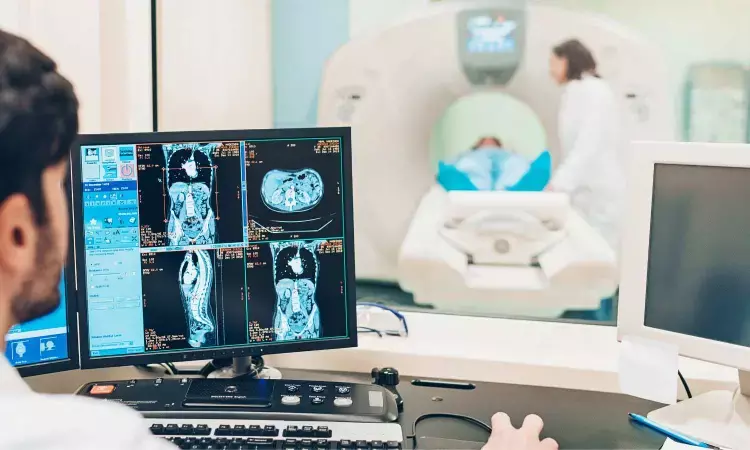- Home
- Medical news & Guidelines
- Anesthesiology
- Cardiology and CTVS
- Critical Care
- Dentistry
- Dermatology
- Diabetes and Endocrinology
- ENT
- Gastroenterology
- Medicine
- Nephrology
- Neurology
- Obstretics-Gynaecology
- Oncology
- Ophthalmology
- Orthopaedics
- Pediatrics-Neonatology
- Psychiatry
- Pulmonology
- Radiology
- Surgery
- Urology
- Laboratory Medicine
- Diet
- Nursing
- Paramedical
- Physiotherapy
- Health news
- Fact Check
- Bone Health Fact Check
- Brain Health Fact Check
- Cancer Related Fact Check
- Child Care Fact Check
- Dental and oral health fact check
- Diabetes and metabolic health fact check
- Diet and Nutrition Fact Check
- Eye and ENT Care Fact Check
- Fitness fact check
- Gut health fact check
- Heart health fact check
- Kidney health fact check
- Medical education fact check
- Men's health fact check
- Respiratory fact check
- Skin and hair care fact check
- Vaccine and Immunization fact check
- Women's health fact check
- AYUSH
- State News
- Andaman and Nicobar Islands
- Andhra Pradesh
- Arunachal Pradesh
- Assam
- Bihar
- Chandigarh
- Chattisgarh
- Dadra and Nagar Haveli
- Daman and Diu
- Delhi
- Goa
- Gujarat
- Haryana
- Himachal Pradesh
- Jammu & Kashmir
- Jharkhand
- Karnataka
- Kerala
- Ladakh
- Lakshadweep
- Madhya Pradesh
- Maharashtra
- Manipur
- Meghalaya
- Mizoram
- Nagaland
- Odisha
- Puducherry
- Punjab
- Rajasthan
- Sikkim
- Tamil Nadu
- Telangana
- Tripura
- Uttar Pradesh
- Uttrakhand
- West Bengal
- Medical Education
- Industry
RV Global Longitudinal Strain on Cardiac MRI Predicts Future Heart Failure: Study

A new study published in the journal of Radiology: Cardiothoracic Imaging showed that right ventricular global longitudinal strain measured by cardiac MRI can predict the development of incident heart failure (HF). This metric may serve as an early, noninvasive marker of ventricular dysfunction, helping identify at-risk patients before clinical symptoms appear.
Ejection fraction (EF) is frequently used to evaluate ventricular systolic performance in heart failure assessment, which primarily focuses on cardiac anatomy and function. EF, however, has significant drawbacks and could overlook early malfunction. By measuring both global and segmental ventricular deformation, myocardial strain offers a more sensitive measurement.
Because cardiac MRI is accurate and repeatable, it is still the gold standard for assessing the right ventricle (RV). Although there is little evidence in the general population, RV strain has demonstrated great predictive significance in a number of illnesses. Therefore, this study assessed the relationship between acute heart failure (HF) and right ventricular strain measurements obtained from feature-tracking cardiac MRI.
Data from 45,700 individuals (23,764 females) from the UK Biobank Imaging Study between August 2006 and July 2010 were used in this retrospective study. Standardized UK Biobank equipment and methods were used to produce cardiac MRI scans. A certified postprocessing program's feature-tracking module (cvi42 prototype version 5.13.7) was used to analyze the images.
Using univariable and multivariable Cox regression models adjusted for established clinical characteristics and RV imaging markers with known prognostic values, the relationship between each RV global strain marker (global longitudinal strain [GLS], global circumferential strain [GCS], and global radial strain [GRS]) and incident HF was evaluated.
The median follow-up was three years, and the mean age ± SD of the 45,700 study participants (23,764 females) was 65 years ± 7.7. Increased HF risk was linked to lower absolute RV GLS, RV GCS, and RV GRS (hazard ratio [HR]: 1.34, 1.37, and 0.71, respectively; P <.001 for all).
Multivariable analyses adjusted for clinical variables and traditional RV imaging indicators revealed that only RV GLS was an independent predictor of HF (HR: 1.16; 95% CI: 1.02, 1.33; P =.04).
Overall, after taking clinical characteristics into consideration RV GCS, RV GLS, and RV GRS are independently predictive of HF in the general population. When compared to clinical characteristics and commonly used RV imaging indicators, RV GLS showed independent predictive value.
Source:
Chadalavada, S., Mahmood, A., Salatzki, J., Hesse, K., Fung, K., Khanji, M. Y., Raisi-Estabragh, Z., Aung, N., & Petersen, S. E. (2025). MRI-derived right ventricular global longitudinal strain predicts Heart Failure. Radiology. Cardiothoracic Imaging, 7(6), e240493. https://doi.org/10.1148/ryct.240493
Neuroscience Masters graduate
Jacinthlyn Sylvia, a Neuroscience Master's graduate from Chennai has worked extensively in deciphering the neurobiology of cognition and motor control in aging. She also has spread-out exposure to Neurosurgery from her Bachelor’s. She is currently involved in active Neuro-Oncology research. She is an upcoming neuroscientist with a fiery passion for writing. Her news cover at Medical Dialogues feature recent discoveries and updates from the healthcare and biomedical research fields. She can be reached at editorial@medicaldialogues.in
Dr Kamal Kant Kohli-MBBS, DTCD- a chest specialist with more than 30 years of practice and a flair for writing clinical articles, Dr Kamal Kant Kohli joined Medical Dialogues as a Chief Editor of Medical News. Besides writing articles, as an editor, he proofreads and verifies all the medical content published on Medical Dialogues including those coming from journals, studies,medical conferences,guidelines etc. Email: drkohli@medicaldialogues.in. Contact no. 011-43720751


